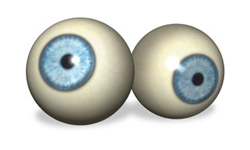I always enjoy when visionaries give their thoughts on where technology is headed. Their vision of the future provides a better view of tomorrow's winners and losers.
As both point out, the current infrastructure of the Net will not be able to handle the upcoming applications in store.

Some interesting comments from Bill Gates on advertising and bandwidth at the Microsoft Strategic Acount Summit.
From Seattle PI
Bill Gates: Reading to go online (On printed vs the screen) The ads in the online reading are completely targeted as opposed to just being run-of-print, where many of the readers will find them completely irrelevant.
(On TV) this idea of changing TV from being a simply broadcast medium to being a targeted medium.
In order to have this be targeted, you cannot send it over the airwaves.
There's just not enough capacity to broadcast thousands and thousands of different video feeds.
And that's where the Internet comes in. The Internet is now cheap enough that the idea of having every household in America watching a different video feed has become practical.
the ads will be targeted, not just targeted to the neighborhood level, but targeted to the viewer.
We'll actually not just know the household that that viewing is taking place in, we'll actually know who the viewers of that show are, and so it's a very rich environment.
----------------------------------------------------------
Mark Cuban, founder of
HDNet had
this to say at a hearing of the House Subcommittee on Telecommunications and the Internet.
"no longer the case at all technology improves with age"
"
the internet is not prepared to take on what digital video is calling for"
Now that the consumer Internet has matured, Cuban argues that it needs significant investment in last-mile infrastructure, specifically fiber.
While the Internet's fiber backbone is in no danger of running out of capacity,
last-mile bottlenecks (especially through twisted-pair wiring) make the system "pretty weak" for transmitting video.
Even
peer-to-peer networks, sometimes pitched as a solution to the problem, simply spread distribution from the center of the network, where bandwidth is available, to the edges, where bandwidth is constrained.
































